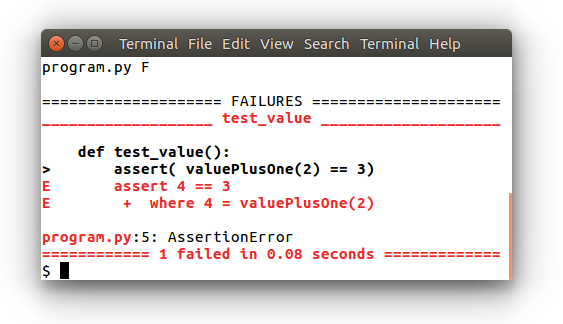

- #Iunit testing python how to#
- #Iunit testing python update#
- #Iunit testing python software#
- #Iunit testing python code#
- #Iunit testing python windows#
Not a bad start to our unit testing, but this isn’t a very complex example. Now the output from running the unit tests look like:
#Iunit testing python update#
To help illustrate the verbose output, update the unit test file (basicfunction.ut.py) to include a second unit test: I included the ‘-v’ flag to show the verbose output so you can see each unit test that is run (only one in this case).
#Iunit testing python how to#
Here’s how to run the unit tests from the command line:įrom the output above, you can see that be going into your project’s directory, you can simply execute the unit test. What does this do? These lines allow us to run the unit tests (defined in the TestBasicFunction class) from the command line. At the end of the file, the following two lines are included: For now, it just has a simple ‘assertTrue’ statement that will always pass. Next, a basic class is created that we will eventually use to test out the basicfunction.py code. The unit test file starts off by importing the built-in ‘unittest’ module from python. To start, let’s create a really basic unit test file that doesn’t even care about basicfunction.py yet:Ĭlass TestBasicFunction(unittest.TestCase):
#Iunit testing python code#
Here is the source code for basicfunction.py: To start off with a basic example, we’ll use the following file/directory structure: It starts with a basic example to show how unit tests execute and then moves on to a typical file/directory structure for a python project. We can check that they all have the same type and get an error if they are not.This blog post shows the basics of setting up the unit tests for your python project. In python, not all the elements of a list have to be of the In the code below, lst is bound to a list object. We will just use simple assert statements for automated tests. Those provide some output summarizing tests that have passed as well as those that failed. In larger projects, other testing harnesses are used instead of assert, such as the python unittest You just want to know when one of your testsįails. Up your output window with the results of automated tests that pass. Why doesn’t assert print out something saying that the test passed? The reason is that you don’t want to clutter Trouble tracing to the place where you had an error in your code. That fact right away than to have some unexpected result much later in your program execution, which you will have Will alert that you that some condition you assumed was true is not in fact true. Why would you ever want to write a line of code that can never compute anything useful for you, but sometimes causesĪ runtime error? For all the reasons we described above about the value of automated tests.

#Iunit testing python software#
In larger software projects, the set of test cases can be run every time a change is made to the code base. You can get some of the same benefit from writing your own test cases. We wrote the code for those test cases but kept it hidden, so as not to confuse you and also to avoid giving away the answers.
#Iunit testing python windows#
You’ve actually been the beneficiary of such automated feedback via test cases throughout this book in some of the activecode windows and almost all of the exercises. Writing down test cases forces us to be more concrete about what should happen.Īs we write the code, the test cases can provide automated feedback. There are several reasons why it’s a good habit to write test cases.īefore we write code, we have in mind what it should do, but those thoughts may be a little vague. It is an even better idea to write down some test cases before writing a program. We have previously suggested that it’s a good idea to first write down comments about what your code is supposed to do,īefore actually writing the code. A function is one form of a unit.Ī collection of these unit tests is called a test suite. Procedure used to validate that individual units of code are working properly. Specifically, a testĪsserts something about the state of the program at a particular point in its execution. A test case expresses requirements for a program, in a way that can be checked automatically.


 0 kommentar(er)
0 kommentar(er)
